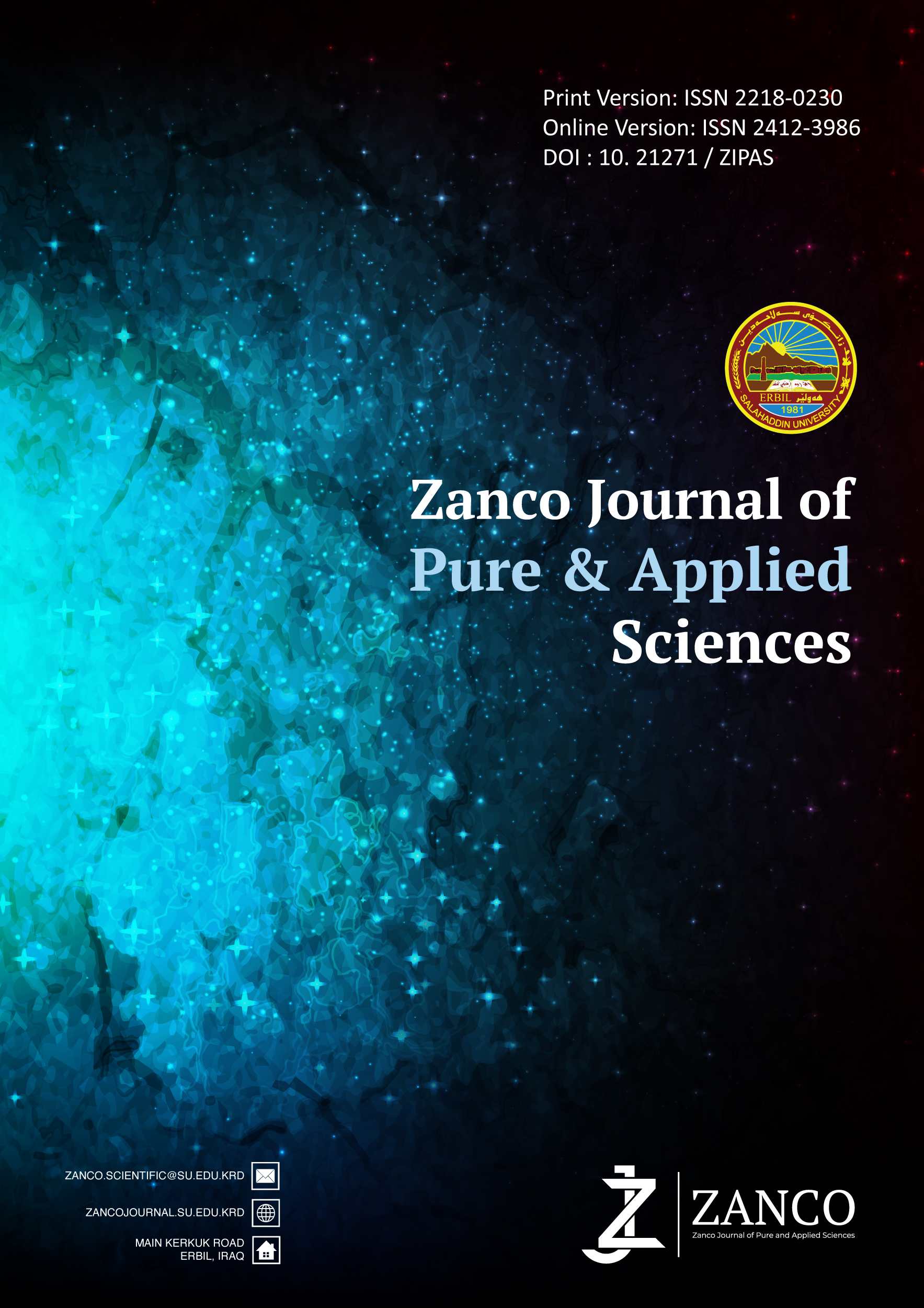Ocular Disease Classification Using Different Kinds of Machine Learning Algorithms
DOI:
https://doi.org/10.21271/ZJPAS.36.2.3Keywords:
Fundus photos, Deep learning, Ophthalmology, Classification, Machine learning.Abstract
Ocular disease is a term used to describe a wide range of illnesses that affect the eyes and visual system. These diseases can affect one or both eyes and can range from mild to severe. The use of machine learning algorithms to categorize ocular diseases has become an area of interest in the ophthalmology community.
This study is to compare the performance of different machine learning algorithms in classifying ocular diseases based on fundus images. The dataset of fundus images of patients diagnosed with different ocular diseases like Cataracts, pathological myopia, glaucoma, age-related macular degeneration, and abnormalities are considered. Ocular Disease Intelligent Recognition (ODIR) has been used. The SeequzeNet and GoogleNet deep learning models with different machine learning algorithms employed in experimental work includes KNN, random forest, support vector machines, logistic regression, and gradient boosting. The performance of each algorithm is evaluated using accuracy, sensitivity, and specificity metrics. The results show that logistic regression outperforms the other algorithms in terms of accuracy, sensitivity, and specificity. The findings of this study suggest that machine learning algorithms, particularly Logistic Regression, can be useful in accurately classifying ocular diseases based on fundus images. Feature extraction using SeequzeNet achieved an accuracy of 71.6%, outperforming GoogleNet's accuracy of 68.2%.
References
MEDEIROS FA, JAMMAL AA, THOMPSON AC .2021. From machine to machine: An OCT-trained deep learning algorithm for objective quantification of glaucomatous damage in fundus photographs. J Glaucoma. 2021;30(1):9-16.
TUFAIL A, RUDNISKY CJ, LEUNG I. 2020. Automated diabetic retinopathy image assessment software: diagnostic accuracy and cost-effectiveness compared with human graders. Br J Ophthalmol. 2020;104(7):913-918.
SHARMILA, R., & RAJESWARI, R. 2020. Classification of Diabetic Retinopathy using Convolutional Neural Network. IJERT journal. 42-45.
CHEN, X., Xu Y.,Wong D., T Liu, Jiang. 2015. Glaucoma detection based on deep convolutional neural network. Conference proceedings:.Annual International Conference of the IEEE Engineering in Medicine and Biology Society. IEEE Engineering in Medicine and Biology Society. Conference. 2015. 715-718. 10.1109/EMBC.2015.7318462.
NAITHANI, S., BHARADWAJ, S. AND KUMAR, D., 2019. Automated Detection of Diabetic Retinopathy using Deep Learning. IRJET journal.
MASOOD, S., FANG, R., LI, P., LI, H., SHENG, B., MATHAVAN, A., WANG, X., YANG, P., WU, Q., QIN, J. AND JIA, W., 2019. Automatic choroid layer segmentation from optical coherence tomography images using deep learning. Scientific reports, 9(1), p.3058.
HE T AND ZHOU Q, ZOU Y.2022. Automatic Detection of Age-Related Macular Degeneration Based on Deep Learning and Local Outlier Factor Algorithm. Diagnostics (Basel). 2022 Feb 18;12(2):532. doi: 10.3390/diagnostics12020532. PMID: 35204621; PMCID: PMC8871377.
WANG, J., Ju, R., Chen, Y., Zhang, L., Hu, J., Wu, Y., Dong, W., Zhong, J. and Yi, Z., 2018. Automated retinopathy of prematurity screening using deep neural networks. EBioMedicine, 35, pp.361-368..
CHENG, W.S., CHEN, C.L., CHEN, J.T., LIN, L.T., PAO, S.I., CHEN, Y.H. AND LU, D.W., 2020. AR12286 alleviates TGF-β-related myofibroblast transdifferentiation and reduces fibrosis after glaucoma filtration surgery. Molecules, 25(19), p.4422.
LIU, X., ALI, T.K., SINGH, P., SHAH, A., MCKINNEY, S.M., RUAMVIBOONSUK, P., TURNER, A.W., KEANE, P.A., CHOTCOMWONGSE, P., NGANTHAVEE, V. AND CHIA, M., 2022. Deep learning to detect OCT-derived diabetic macular edema from color retinal photographs: a multicenter validation study. Ophthalmology Retina, 6(5), pp.398-410.
RASHEED, K., QAYYUM, A., QADIR, J., SIVATHAMBOO, S., KWAN, P., KUHLMANN, L., O’BRIEN, T. AND RAZI, A., 2020. Machine learning for predicting epileptic seizures using EEG signals: A review. IEEE Reviews in Biomedical Engineering, 14, pp.139-155.
LENG, X., SHI, R., WU, Y., ZHU, S., CAI, X., LU, X. AND LIU, R., 2023. Deep learning for detection of age-related macular degeneration: A systematic review and meta-analysis of diagnostic test accuracy studies. Plos one, 18(4), p.e0284060.
WU, Y., XIA, Y., SONG, Y., ZHANG, Y. AND CAI, W., 2018. Multiscale network followed network model for retinal vessel segmentation. In Medical Image Computing and Computer Assisted Intervention–MICCAI 2018: 21st International Conference, Granada, Spain, September 16-20, 2018, Proceedings, Part II 11 (pp. 119-126). Springer International Publishing.
ALPAYDIN, E. (2010). Introduction to machine learning (2nd ed.). MIT Press.
HASTIE, T., TIBSHIRANI, R., & FRIEDMAN, J. 2009. The elements of statistical learning: data mining, inference, and prediction (2nd ed.). Springer.
BREIMAN, L. 2001. Random forests. Machine learning, 45(1), 5-32.
VAPNIK, V. N. 1995. The Nature of Statistical Learning Theory. Springer Science & Business Media.
CORTES, C. AND VAPNIK, V. 1995. Support-vector networks. Machine Learning, 20(3), 273-297.
SHAWE-TAYLOR, J. AND CRISTIANINI, N. 2004. Kernel Methods for Pattern Analysis. Cambridge University Press.
KECMAN, V. 2001. Learning and Soft Computing: Support Vector Machines, Neural Networks, and Fuzzy Logic Models. MIT Press.
HOSMER JR, D. W., LEMESHOW, S., & STURDIVANT, R. X. 2013. Applied logistic regression. John Wiley & Sons.
BISHOP, C. M. 2006. Pattern recognition and machine learning. Springer.
GOODFELLOW, I., BENGIO, Y., & COURVILLE, A. 2016. Deep learning. MIT press.
FRIEDMAN, J. H. 2001. Greedy function approximation: A gradient boosting machine. Annals of Statistics, 29(5), 1189-1232.
CHEN, T. and GUESTRIN, C. 2016. XGBoost: A Scalable Tree Boosting System. In Proceedings of the 22nd ACM SIGKDD International Conference on Knowledge Discovery and Data Mining (pp. 785-794).
KE, G., MENG, Q., FINLEY, T., WANG, T., CHEN, W., MA, W., LIU, T. Y. 2017. LightGBM: A Highly Efficient Gradient Boosting Decision Tree. In Advances in Neural Information Processing Systems (pp. 3146-3154).
PROBST, P., BOULESTEIX, A. L., BISCHL, B. 2018. Tunability: importance of hyperparameters of machine learning algorithms. Journal of Machine Learning Research, 18(171), 1-32.
https://www.kaggle.com/datasets/andrewmvd/ocular-disease-recognition-odir5k
TING, D. S. W., PASQUALE, L. R., PENG, L., CAMPBELL, J. P., LEE, A. Y., RAMAN, R., TAN, G. S. W., SCHMETTERER, L., KEANE, P. A., & WONG, T. Y. 2018. Artificial intelligence and deep learning in ophthalmology. British Journal of Ophthalmology, 103(2), 167–175. https://doi.org/10.1136/bjophthalmol-2018-313173
IANDOLA, F. N., HAN, S., MOSKEWICZ, M. W., ASHRAF, K., DALLY, W. J. & KEUTZER, K. (2016). SqueezeNet: AlexNet-level accuracy with 50x fewer parameters and< 0.5 MB model size. arXiv preprint arXiv:1602.07360.
HAN, S., POOL, J., NARANG, S., MAO, H., TANG, S., ELSEN, E., CATANZARO, B., TRAN, J. & DALLY, W. J. 2016. DSD: regularising deep neural networks with dense-sparse-dense training flow
WU, B., IANDOLA, F., JIN, P. H. & KEUTZER, K. 2017. Squeezedet: Unified, small, low power fully convolutional neural networks for realtime object detection for autonomous driving. Proceedings of the IEEE Conference on Computer Vision and Pattern Recognition Workshops. 129-137
DAVID GSCHWEND. 2016. Zynqnet: An fpga-accelerated embedded convolutional neural network. Master’s thesis, Swiss Federal Institute of Technology Zurich (ETH-Zurich).
SZEGEDY, C., LIU, W., JIA, Y., SERMANET, P., REED, S., ANGUELOV, D., ERHAN, D., VANHOUCKE, V. & RABINOVICH, A. 2015. Going deeper with convolutions. Proceedings of the IEEE conference on computer vision and pattern recognition. 1-9
Downloads
Published
How to Cite
Issue
Section
License
Copyright (c) 2024 Mardin Abdullah Anwer, Ghassan Akram Qattan, Abbas Mohamad Ali

This work is licensed under a Creative Commons Attribution 4.0 International License.














